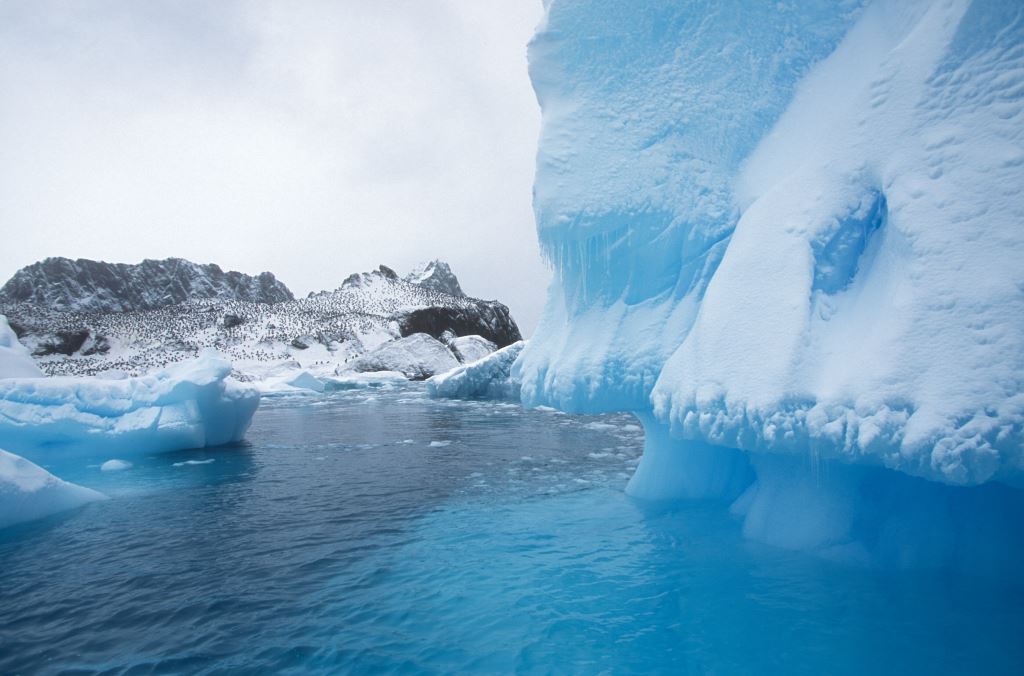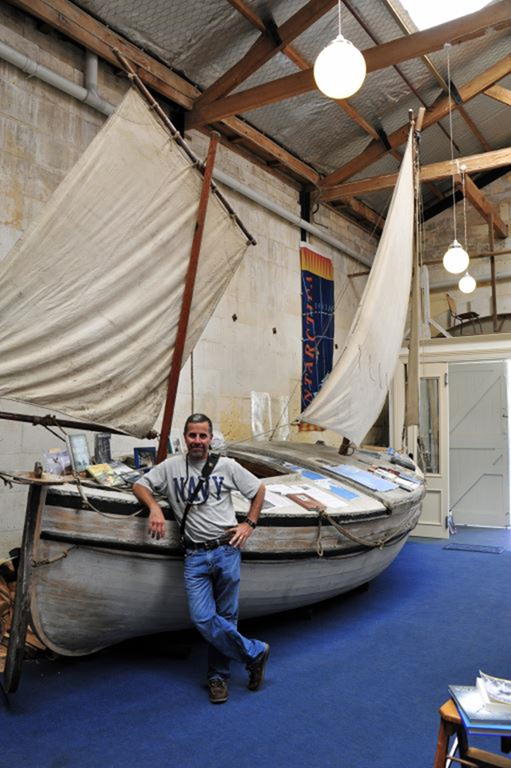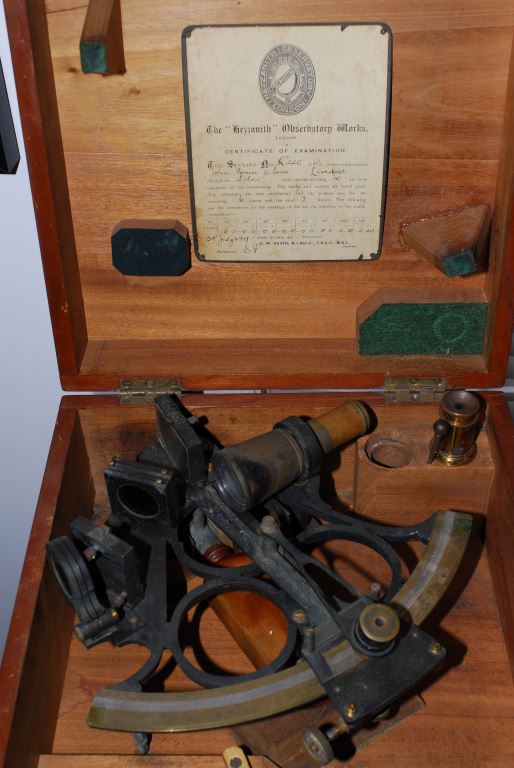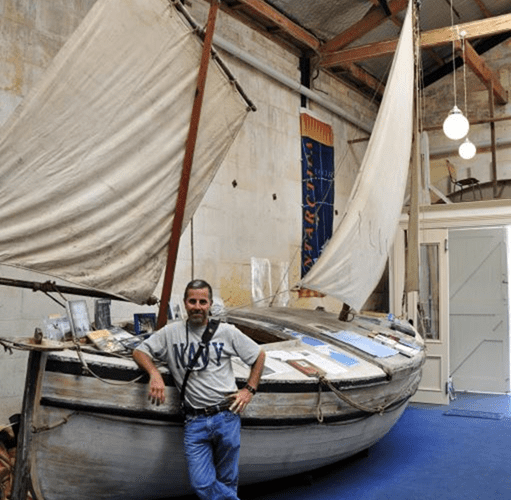Marine systems expert, ABYC-certified Master Technician and frequent ON contributor Steve D'Antonio operates his own consulting firm Steve D'Antonio Marine Consulting. He also has an avid interest in maritime history. Below is a piece on a particular fascination of his: the epic efforts by Sir Ernest Shackleton and his expedition members to save themselves after their vessel was crushed by ice in Antarctica. Here, Steve focuses on the beginning of Shackleton's amazing voyage aboard the 22-foot James Caird across the stormy Drake Passage. James Caird departed from Elephant Island on April 24, 1916, 102 years ago today. (text and photos by Steve D'Antonio).
Preparation
Shackleton (the Boss) and most of the men knew that Elephant Island was but a temporary stop over. Elephant Island was in no known shipping lanes and no whalers or sealers visited this remote outpost. If rescue would not come to them, they would have to rescue themselves. The Boss wasted little time in formulating a plan and it was bold. He, along with five others, would sail the largest, most seaworthy boat, the 22-foot James Caird, 800 miles to South Georgia. This would be a stupendous feat of navigation and seamanship in even placid waters. To undertake such a journey through the notoriously tumultuous autumn Southern Ocean in a seriously weakened vessel, by malnourished, exhausted men, during winter, nearly defies imagination.
Shackleton called upon Chippy McNish to strengthen the Caird’s keel, raise her freeboard (it would remain perilously low, just 2 feet once she was fully loaded) and deck her over. McNish, in his usual resourceful manner scavenged wood and nails from the other boats and crates for the freeboard portion of the refit. The keel he strengthened by lashing the mast from another boat, the Stancomb Wills to the Caird’s keelson. Caulking was improvised from lamp wick, oil paint and seal’s blood. The subject of ballast and just how much the Caird should carry was discussed extensively. Ultimately, 2000 pounds of stones from the rocky beaches of Elephant Island were distributed within the Caird’s bilges, improving her stability, it was hoped, while making for some very uncomfortable sleeping quarters for her crew. Finally, because there wasn’t enough wood to build a proper deck, canvas was used, supported by a timber frame.
 |
|
Barren and inhospitable Elephant Island |
For the crew, although the odds were long, nearly every man in the party volunteered. Shackleton first chose Worsley, the Endurance’s skipper. He proved his skills many times over by safely and accurately piloting the trio of boats from the ice floe to Elephant Island and thus Shackleton had supreme confidence in his abilities as a navigator. He also chose McCarthy, one of the trawlermen, who had also proven himself capable in the first boat journey. Tellingly, he also chose two of the least reliable crewman, McNish and Vincent. McNish, although a master carpenter whose skills may be valuable on such a journey, had shown his disloyalty by inciting a near mutiny while on the ice. Shackleton wanted to ensure that his seditiousness would pose no threat to the morale of those left behind. He also cannily surmised that Chippy’s modifications to the Caird would be more thorough if he knew he was to be part of her crew. Vincent, physically the largest and strongest of the entire crew, was known as a bully and troublemaker and the Boss wanted him where he could be watched as well. Finally, the indestructible Tom Crean begged to be taken. Shackleton had originally thought he would be useful to Frank Wild, who would remain behind and in command of the Island group. Crean was so insistent upon going, however, that Shackleton ultimately relented.
 |
|
Steve D'Antonio stands before a replica of the James Caird, in a bookshop in Oamaru, New Zealand. |
The Boat Journey
James Caird was launched on April 23, taking her leave of Elephant Island on the following day. Almost immediately, the winds and waves of the Southern Ocean conspired to make the journey unpleasant, all but Worsley and McCarthy were dreadfully seasick. The necessity of taking on hot food in order to stave off the interminable cold, however, was paramount. Hot meals were prepared over the small Primus oil stove every four hours, delicately balanced by Worsley and Crean. They both suffered alternating and repeated burns and frostbite to their hands between preparing meals and standing watches in the frigid cockpit. Their diet consisted primarily of a sledging ration known as “Hoosh”, originally destined for the overland journey to the pole. This concoction was a special high calorie mixture of beef protein, lard, oatmeal, sugar, salt and water. Interspersed between meals were servings of hot milk with the occasional tot of blubber oil. The latter was originally intended to calm rough seas. Worsley wrote in his diary, “the oil would have sufficed but one gale, we had ten during our passage.”
 |
|
The sextant used by Captain Frank Worsley to navigate the James Caird across the Southern Ocean to the Island of South Georgia. |
Life was difficult at best for this small group of desperate soles. Sleeping bags would freeze between the time one occupant vacated and the next attempted to enter. Thus, it could take as long as half an hour to kick one’s way back into a bag that was as stiff as iron sheet. To add to the general wretchedness of the Caird’s living conditions, the once sought after reindeer sleeping bags had begun to molt. The result was, it seemed, everything became laced with the infernal reindeer hairs, the men’s clothes, hoosh and milk as well as their mouths.
Sleep was nearly impossible for the off watch; every movement produced sharp jabs by crates of food, ballast stones or a neighboring body. Constant emersion produced salt-water boils on wrists, feet, legs and buttocks. Added to this pitiable condition were the regular torrents of icy water that ran through gaps and seams in the canvas deck onto the men’s heads and already sodden sleeping bags. For ordinary men, the last straw would have been the discovery that one of the water casks had been damaged in loading back at Elephant Island and was now tainted with seawater. These were, however, far from ordinary men. Shackleton cut the water ration and the subject was never mentioned again.
 |
|
The compass used for navigating the James Caird. Its accuracy was questionable as it was affected by the boat’s iron bilge pump. The compass could only be used by day as it had no lamp, and the crew’s one candle was being reserved for use when they reached shore. The helmsman was forced to steer by wind and wave direction, however, periodically a ‘lifeboat match’ would be lit to check the course against the compass. |
The third day out a break in the clouds allowed Worsley an opportunity to get a sun sight. As an experienced celestial navigator, I would classify Worsley’s achievements as nothing less than awe inspiring, particularly because celestial navigation is difficult even under the best of circumstances. Attempting to obtain a sight from a 22-foot boat, while rolling through 40-foot seas and being whipped by salt spray is virtually impossible. Worsley described these sights as a four-man affair. He would, supported by the hands of Crean and McCarthy, take the sight while Shackleton waited below, ready with chronometer, pencil and paper to record the angle and time. Once the sight had been obtained, Worsley would crawl below and gently prize open the sopping pages of the nautical almanac and logarithmic reduction tables, showing care not to tear the pulpy sheets. He then would reduce the sight by candlelight. Again, as a celestial navigator, it nearly defies belief that Frank Worsley could have obtained accurate fixes under these conditions.
Ominously, several days into the boat journey, the wreckage of a ship, a figurehead and sections of deck, floated by as the crew of the James Caird watched in silence. A vessel that had met its match rounding the Horn perhaps, no one would ever know.
To be continued…

